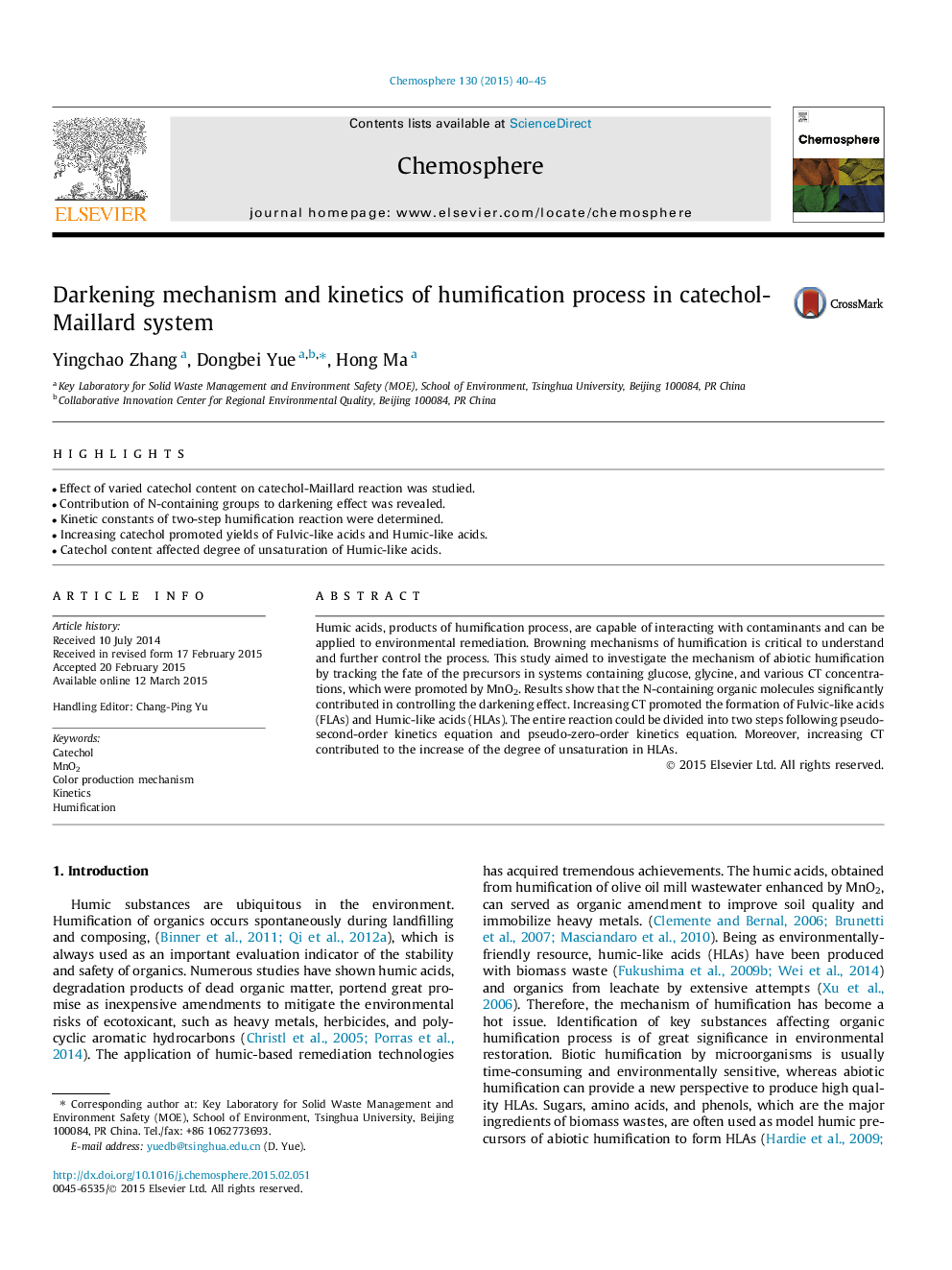| Article ID | Journal | Published Year | Pages | File Type |
|---|---|---|---|---|
| 4408321 | Chemosphere | 2015 | 6 Pages |
•Effect of varied catechol content on catechol-Maillard reaction was studied.•Contribution of N-containing groups to darkening effect was revealed.•Kinetic constants of two-step humification reaction were determined.•Increasing catechol promoted yields of Fulvic-like acids and Humic-like acids.•Catechol content affected degree of unsaturation of Humic-like acids.
Humic acids, products of humification process, are capable of interacting with contaminants and can be applied to environmental remediation. Browning mechanisms of humification is critical to understand and further control the process. This study aimed to investigate the mechanism of abiotic humification by tracking the fate of the precursors in systems containing glucose, glycine, and various CT concentrations, which were promoted by MnO2. Results show that the N-containing organic molecules significantly contributed in controlling the darkening effect. Increasing CT promoted the formation of Fulvic-like acids (FLAs) and Humic-like acids (HLAs). The entire reaction could be divided into two steps following pseudo-second-order kinetics equation and pseudo-zero-order kinetics equation. Moreover, increasing CT contributed to the increase of the degree of unsaturation in HLAs.
